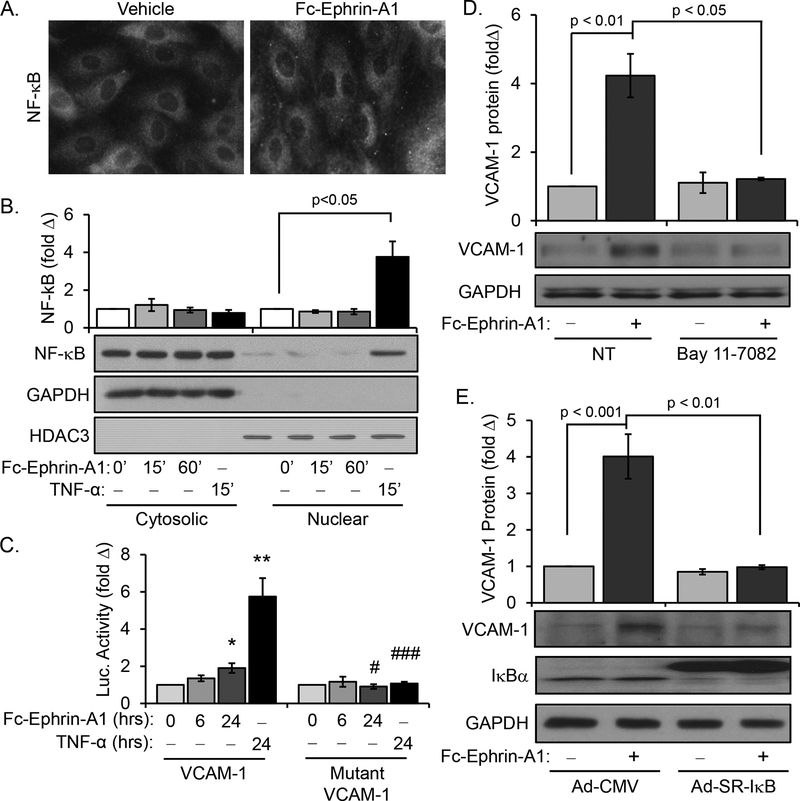Figure 1.
Ephrin-A1 does not stimulate NF-κB activation in human aortic endothelial cells. A) HAECs treated with dimerized ephrin-A1-Fc (2 μg/mL, 1 hour) fail to induce NF-κB nuclear translocation as assessed by immunocytochemistry for nuclear p65 localization; n = 4. B) Endothelial cells were treated with ephrin-A1-Fc at the indicated times or with TNFα (10 ng/mL, 1 hour), and NF-κB levels in the nuclear and cytosolic fractions was assessed by Western blotting for total p65; n = 4. C) Endothelial cells expressing the luciferase reporter constructs under the control of a VCAM-1 promoter or a mutated VCAM-1 promoter were treated with ephrin-A1-Fc or TNF-α for the indicated times; n = 4. D) NF-κB inhibition with Bay 11–7082 (10 μM) prevented ephrin-A1-induced VCAM-1 expression as assessed by Western blotting. n=4. E) Adenoviral overexpression of super-repressor IκB (SR-IκB) but not a CMV control prevented VCAM-1 expression as assessed by Western blotting. n=4. * p < 0.05, ** p<0.01 compared to untreated control, # p<0.05, ### p<0.001 compared to wildtype VCAM-1 promoter construct. Statistical comparisons were made with Kruskal Wallis 1-way ANOVA with Dunn’s Multiple Comparison posttest (A) or 1-way ANOVA with Bonferroni posttest (C)

